Solivagant
The Twin Monastery of Wearmouth Jarrow
The Twin Monastery of Wearmouth Jarrow (Removed from tentative list)
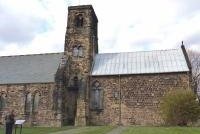
If UK’s nomination for 2012 does gain inscription many people who go out of their way to see it might be surprised at how little is “on view”! It consists of the sites of twin monasteries set up in 674 and 685 respectively – about 8 miles apart, near present day Sunderland. The founder Bishop Benedict “brought workmen from Francia to build these churches, the first ecclesiastical structures in Britain built of stone, and furnished (them) with glass windows, pictures, service books and the library he had collected on his travels. Window glass being unusual in England at the time, Benedict imported glassmakers from Francia, who established a workshop at the Monkwearmouth site” (Wiki) , They flourished until the late 8th and 9th centuries when Viking raids took place. During this time, with their easy access to the North Sea, they played a major part in the exchange of knowledge and ideas across Christian Europe. They were finally destroyed as working institutions by the Danes around 860 although they were resurrected in smaller ways during Norman times.
At Monkwearmouth you will see a largely 19th century church of St Peter which incorporates a tower, a few walls and a main door from the original Anglo Saxon church together with additions from c1000 and 14th C. It is set in a grassy area on which the outlines at ground level of the original monastery buildings are marked out – the below ground aspects of the site are considered significant even though …
Keep reading 0 comments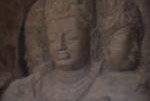
One of the most impressive sections of the rainforests is the Rainforest Centre at Dorrigo, NSW. There is a 'sky walk' that takes you over the forest canopy and has sweeping views out towards the ocean. Add to this a beautiful 3 hour work on a path through the forest, truely magic.
Keep reading 0 comments
This is must see site when in London. So much history associated with the Abbey, not to mention so much to see. At six pounds the 'entry fee' and guided tour is well worth it. Just don't go on a Sunday because the Abbey is closed to tourists thanks to normal church services.
Keep reading 0 comments
Not many WHS, especially in Asia, come as touristy as this one. It attracts bus (and probably plane) loads of western tourists, mainly on group tours. They behave like they're in Thailand, and have come for the shopping, the beach, the beer.
I had a hard time seeing the town, the 4 roads that comprise this WHS that is, as a cultural heritage site. One morning I bought a ticket that gives you entrance to 5 historic buildings in town. You can choose whichever 5 you like from the about 20 that open their doors to visitors. Though all the other buildings in town are very welcoming too, as they are either restaurants or silk/clothes shops.
I enjoyed the Tan Ky house the most - an old merchant's house with its back to the river (to easily load the merchandise) and the front at the town's main street. The houses in this area of Hoi An always have been very susceptible to flooding - inside Tan Ky there are markings on the wooden beams to show how high the water reached in which year. 1.5 to 2 meters is no exception.
I've now visited all 3 Asian trading ports on the List (Vigan, Melaka and Hoi An) - and none of those 3 did really impress me. Hoi An did remind me of Ping Yao: the dark wooden structures of the houses, and the Chinese influences on the Vietnamese houses. Ping Yao, though touristy as well, is …
Keep reading 0 comments
My Son's strong points are its remarkable history and its jungle setting. I visited it on the back of a moto from Hoi An, an hour's drive away. During the day busloads of tourists are dropped off here, probably overcrowding the site as it is pretty small.
I arrived at 8.45 a.m. when there were maybe 10 other people around. To get to the site, you have to walk on a path through the jungle for the last couple of hundred meters - a real pleasure in itself, finding something so wild in heavily populated Vietnam. I heard many birds, and saw wonderful butterflies and hummingbirds.
The temples are really ruined, only at the first part of the complex (groups B and C) they are standing upright though also heavily damaged. The damage comes from bombing during the Vietnam War (you can still see the craters), but also from age. Most of the interior decorations and sculptures have been taken from here to the Champa museum in Da Nang. Only a couple of them are on show now here, at temples D1 and D2. From these sparse remains, one can only guess what they might have looked like in their heydays.
Because of the damage and I think also because of the use of brick, the temples look pretty crude. Most of the outlying temples are even worse off: they are overgrown or blown up into bits and pieces.
Keep reading 0 comments
Between 8 and 9 in the morning, you'll see dozens of minibusses plying the streets of Hanoi. They are picking up their passengers for a tour to the famous Ha Long Bay. You'll see the same minibusses over and over again when driving the 3.5 - 4 hours to Ha Long, and the same tourists will be on your boat or the one next to it. Ha Long Bay is an extremely popular destination both for foreigners and Vietnamese: already in the early 1990s, it saw over 1 million visitors a year. It is unlikely that that number has decreased over the years - so there will always be about 3,000 other people in the Bay at the same time as you!
I visited just a week after the fatal accident that killed 12 people here on an overnight boat. Traffic seemed to have resumed as normal. Overnight stays are also possible again, some of my group went on to stay for 1 or 2 nights on the boat. I opted for a day trip only: not because of the accident, but also since I usually get bored pretty quickly looking at "natural beauty". And I had heard bad reports about life on board the ships: I knew that I had made the right decision when I overheard the guide speak to the others about the evening program that would constitute "drinking and karaoke".
The natural beauty of the Bay lay hidden today under a very common fog. …
Keep reading 0 comments
Glazed tiles all over the place! That was the first thing that struck me when entering the Citadel. Not only the common Chinese yellow roof tiles but also a kind of porcelain mosaics that I had never encountered before - fragments of blue & white vases that have been put together to form new designs on the outer walls of buildings and gates.
The Citadel is a pleasantly quiet place to walk around for a couple of hours. It's a very busy site near the entrance gate, but I was almost on my own at the back of the complex and at the fringes. My favourite building here was the Truong San Residence, with its great yellow entrance gate. This and most of the other objects look very recently painted and/or restored. Over-restored maybe, I wonder what our Forum would have to say about this one.
A visit to the Hué monuments is not complete without seeing some of the places outside the city. For that, I rented a bicycle and set off south. The first kilometers out of Hué are easygoing. Every 10 minutes or so there's an interesting stop - I visited Nam Giao esplanade, heard the monks chanting at the very peaceful Tu Hieu pagoda, and joined the busloads of tour groups again at the Tomb of Tu Duc. There is a "Tomb" here (though empty), but it actually was more of a country house & pleasure park for the emperor. It still is a …
Keep reading 0 comments
Puebla in my view is not only a beautiful city full of history and great architecture. Puebla has simply the greatest cuisine in America, no other city in Mexico or other country in this continent has the variety of superb dishes that Puebla has, no doubt, Puebla also has some the most valuable cooks in USA.
Keep reading 0 comments
I visited San Miguel de Allende in Feb of 2010 as part of a photography workshop put on by two professional photographers from my home area. Every year they take a group to San Miguel. Shortly before I left I had occasion to speak with one of the students from a previous year; in parting he said “San Miguel will change your life”. I must admit I had to fight to keep a straight face thinking ‘a bit dramatic don’t you think?’ However after two weeks in the colonial town (heck, after my first morning) I was a believer; San Miguel is magic.
While there is a large influx of North Americans, either temporarily or permanently, they don’t come close to outnumbering the locals whose warm welcomes and gracious attitudes are as much a part of San Miguel’s charms as are the narrow cobblestone streets and rooftop cafes. If the world was once black and white then colour was invented in San Miguel. From the warm yellow and orange walls draped with vibrant bougainvillea to the pink spires of La Parroquia to the many lively marketplaces, colour is everywhere in San Miguel. The only times I encountered anything close to a crowd was on Sundays when I joined the locals in La Jardín for a festival (a real highlight) and when I joined a hoard of visitors at La Biblioteca for their weekly home tour (something I would in the future avoid at all costs).
Walking is the best way …
Keep reading 0 comments
I am sorry to say that this was another disappointment, another case of probably expecting too much (like the Ellora Caves). Luang Prabang is almost unanimously praised. And sure, maybe I was "late" and the town is too commercialized now. But I don't believe that the essence was much different 10 years ago: Luang Prabang has a great location and a charming atmosphere. But let's be honest: there's not a whole lot to see.
I think that a lot of people enjoy coming here because of its Mediterranean feel - it's slow, sunny, and romantic. There are dozens of cafés and restaurants. You can unwind, and relax. It's also quite a contrast with Bangkok or Hanoi, two cities where most people fly from into Laos. I travelled through Laos from South to North (leaving Luang Prabang for the last), so I had already gotten used to the country's quietness, the baguettes and Lao Beer.
Luang Prabang certainly is lacking authentic historic sights. I have read the AB evaluation a couple of times now, and it's thin, very thin.
All's bad then, avoid it? No, certainly not. I loved Wat Xieng Thong with its glittering exterior mosaics. The former Royal Palace is also worth a visit. But don't confuse Luang Prabang with the whole of Laos - I enjoyed my stay in the South (an almost different country from the North), the East (with its Plain of Jars and turbulent history) and the various forms of land and …
Keep reading 0 comments
The Megalithic sites of Xieng Khouang province, better known as the Plain of Jars, are so numerous and shaped, unlike anything that you will see elsewhere in the world. Getting there is still pretty adventurous - it is either a flight or a bus ride from Vientiane / Luang Prabang. I did the latter (from Vientiane) and it took 13 hours.
Sites 1, 2 and 3 are the main sites to visit. Others have opened up now too, but they are not on the itinerary of the guided tours. I went on a minibus tour with 3 others, organized via a guesthouse in Phonsavan. The most interesting new development is the discovery of a quarry some km away, where they also found half-finished jars. Our guide told us that a foreign archeologist was working at the sites now, to piece together more about the history of the jars, who made them, and why. They will not apply for WH status until more scientific evidence is found to sustain the theory that the sites are cemeteries.
The visiting experience of the sites is still much as described below by the 2 reviews from 1997 and 2006:
- You have to stay within the marked paths for fear of UXO's
- The whole surrounding landscape is dotted with bomb craters and trenches
- The road to sites 2 and 3 are still unpaved and bumpy
- And yes, at least at sites 2 and 3 you are still allowed …

Southern Laos has always been pretty difficult to access. Things are changing here too, however, albeit slowly. I was happy to discover a direct flight from Ho Chi Minh City in Vietnam to Paksé (the main transport hub in South Laos). Lao Airlines started this only last year, and I wonder how long they will continue it as there were only 20 passengers on my flight. Paksé itself feels unbelievably quiet and slow, especially when you’ve just come from Vietnam as I did. You can easily walk in the middle of the streets in the center of the town. A brochure at the Lao Airlines described it accurately: "it's no chaos, it's Laos"!
As I had plenty of time, I decided to give it a try to get to Vat Phou by public transport. Guidebooks and internet fora could not supply me with clear directions on how to do it. So I started out early (before 7 a.m.), looking for a songthaew to Champasak. To cut a long story short: they do exist, but will go only later in the morning when the people from Champasak have finished their selling and shopping at the market of Paksé. I ended up chartering a whole songthaew, together with an Italian guy who was stuck too.
We arrived in Champasak just before 10 o’clock. I hired a bike for the remaining 8 km to Vat Phou. 10 a.m. is already pretty hot in Laos in March. Fortunately, the road is well-paved, …
Keep reading 0 comments
The most well-known piece of modern architecture in Argentina is Casa Curutchet in La Plata, about one hour south-east of Buenos Aires. Commissioned by an innovative surgeon, Pedro Curutchet, this is the only residential building erected in the Americas by Le Corbusier; however he never visited the site or met the client. The program included the house and medical practice, with all rooms open to the street taking into account the vistas of nearby parks.
Upon approach, the façade appears as a series of shifting planes, differentiating functions and separating space. Once passing through the framed entry on the open ground floor, the visitor is met with a large vertical open space containing a sweeping ramp. The ramp connects the ground floor to the rear living quarters at the mid-way landing, and then switches back to the medical quarters located at the front of the site. Further defining a visual separation, Le Corbusier stipulated the planting of a poplar tree, now mature, within this void between clinic and house.
The medical practice, supported on pilotis with brise-soleils, bridges the full width of the site. The clinic contains three clearly defined spaces; waiting room, examining room and maid's room. Essentially housed in a cube to the rear of the site, the living quarters contain a kitchen, dining room and double height living room with glazing towards the park, further bringing nature inside. The differentiation of space in the residential areas was to be defined by the placement of furniture and slab …
Keep reading 0 comments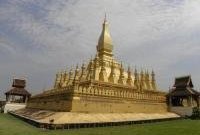
The Grand Shrine (Pha That Luang) of Vientiane is a huge gold-covered stupa. It consists of 3 levels, surrounded by a cloister, plus a 45 meter high spire. It's the most important national monument of Laos, and that's probably what lead to its spot on the Tentative List. It was built in 1566 over an old stupa holding a holy Buddhist relic.
The stupa is located a few km's northeast of the city center of the capital of Laos - too far to walk in the heat. I took a tuktuk there. The driver suggested to wait so he could have the return trip as well - obviously knowing that a visit doesn't take long (and also of course preferring the tourist price for a ride). To an outsider like me it is a very weird object: an enormous glittering object under the radiating Laotian sun. Almost a golden spaceship. Entrance fee is 5000 kip (0,45 EUR). For that you can walk around the cloister and on the first level on the stupa.
Chances on WH status are very low I think: it is mainly a monument of national importance.
Keep reading 0 comments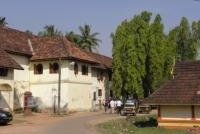
The only reason I can think of why this site features on India's T List, is to give Cochin/Kochi a WHS. Not that Cochin needs to attract even more foreign visitors - I found it a tourist trap completely geared to western tastes. Fortunately I don't think it has any chance of getting in.
Matancherry Palace, locally known as 'Dutch Palace' because they restored it, was built ca. 1555 by the Portuguese. It is located in the south of Fort Cochin peninsular, close to the Jewish town. I rented a bike to get there from the central northern area, a bargain at 50 rupees (0,90 EUR) for a half day. Cycling also has the advantage that you are redeemed of the rickshaw drivers calling out to you every single second. And other tourists either admire or envy you!
The 'palace' is a two tiered white-yellowish, quadrangular building. There's a 5 rupee entrance fee and it gets pretty busy with visitors. I wrote 'palace' because it looks more like a fortress, quite austere with wooden ceilings. Its T List nomination is not clear what the specific reason would be why this should become a WHS, but I guess it's because of the murals. About half of the rooms are adorned with paintings that are sometimes faded, sometimes pretty well-preserved (however in a strange orange colour). They depict scenes of the Ramayana and various Hindu deities. Worth a visit if you're in the area, but not more than that.
Keep reading 0 comments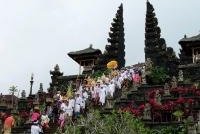
I was at leptis many times and have lots of pictures to share, was there in the early eighties when working in Misrata,I have seen many Roman cities but this is undoubtably the best, this gem is a must see for enthusiasts. (If you get the chance to enter Libya?)
Tony
Keep reading 0 comments
Many Prehistoric sites attract the description “Enigmatic” – meaning that the exact purpose of the objects on view is unclear - and those of the “Plain of Jars” certainly justify the epithet! Just why were these enormous stone jars carved and scattered across this remote plateau in Northern Laos?
We visited in 1997 – flying from Luang Prabang into the ramshackle provincial capital of Phonsavan. This itself was an experience as one looked down onto a countryside pockmarked, as far as the eye could see, with bomb craters. This area was the subject of a saturation bombing campaign by the US in 1969 (the area was strategically significant to Vietnam to protect Hanoi’s rear flank and its many caves provided shelter, both for the Vietnamese/Pathet Lao troops, and supplies). Phonsavan is the Laotian government’s attempt to create a new capital after the old French colonial one of Xieng Khuang was abandoned, having been totally destroyed in the war – in 1997 however Phonsavan itself was only partly formed and had an impermanent “wild west” atmosphere.
I understand that much multinational work has been carried out since 1997 on removing the vast amount of UXO (“Unexploded ordnance”) left over by the war. This had commenced when we were there but only 3 areas of Jars were “open” – and even there
we were cautioned to stick to marked paths. Wiki indicates that the number of cleared areas has risen to 7 in 2010 and also there are opportunites in Phonsavan to …
Keep reading 0 comments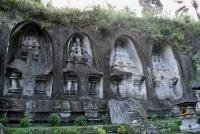
Its been 20 years since i visited nepal and it will truely stay in my heart forever - it was a life-changing experience for me and will never forget it. I met such lovely people and saw sites i had only dreamt of - nepal is a place close to heaven in every sense and hope that people will visit, enjoy and respect it. Kathmandu valley is the most beautiful place iv had the good fortune to travel to and is worth a visit just for its sheer magnificence.The people are inspirational and being in the mountains made me see why the nepalese are so devoutly religious - nepal brought joy into my life and that is where i go in my head when i need to - thankyou nepal and the people of nepal for making such a difference to my life :)
Keep reading 0 comments
I just returned form a visit to Portobelo(Feb. 2011) The heavy rains have taken a toll on the whole area. The road to Portobelo, still had several damaged spots that slowed down traffic. The town of Portobelo had had several house destroyed by landslides with loss of lives. The Fort also suffered damage form the landslides. Parts of the wall had collapsed and huge tree trunk were still in the process of being removed. The site was undergoing repair and restoration. All in all, it is a beautiful site to visit.
Keep reading 0 comments
South bound to Punta Allen in March 10 of last year (2010) I want to go back is the best thing I can say about the place. No crowds! Endless beaches! Animals scurrying about and dodging your vehicle as you drive the pothole road south! ONE BIG ISSUE! The beaches have an accumulation of plastic and that was about the only thing that disappointed me. It would be great if folks could get together down there and form up cleaning squads to comb the beach and clean up the plastic. If you are a college student that wants to get something going this is a job of gargantuan possibilities! We met some awesome students from South Carolina who were down there for Spring break working and having fun too. Fantastic group of young people who cared about what there Spring break could do. The material combed off the beach could be sent to a recycling facility or just destroyed. The beaches would look so much better. We stayed at CESIAK and enjoyed ourselves immensely. The staff were so kind and they were very helpful to us "gringos". We spent several days driving down the peninsula and pulling off onto side roads that led to hidden sections of beach. Gazing north and south for as far as you can see along the beach-no people! Wow what a deal. I would fish from the beach and my wife would relax on the beach and read. We launched a kite and pitched the …
Keep reading 0 comments